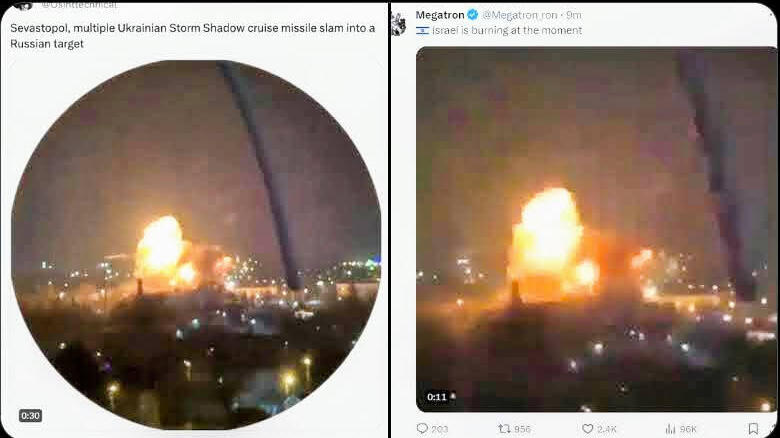Iran's attack on Israel may have failed, but it generated a plethora of fake posts and reports that quickly circulated on social networks. An investigation conducted by fact-checkers, the Israeli Foreign Ministry, and other fact-checkers confirmed that indeed many of the posts were fake news.
Surprisingly, even an IDF Spokesperson's Unit was caught in the same game when many users noted that a segment of a video released by the IDF to depict the reality of the attack was actually taken from footage describing a Russian Grad rocket attack on Ukraine in 2014.
However, the IDF is not the primary player here. In Iran, numerous videos and images were circulated, with the connection between them and the events of the night being dubious at best. For example, a pro-Iranian tweeter disseminated a photo supposedly depicting the explosion at the impact site of an Iranian missile, when in fact it was a strike by a Ukrainian Storm-Shadow missile on a target in Sevastopol.
The Foreign Ministry also participated in the effort to curb the spread of fake images. For example, it was reported that a video depicting a forest fire broadcast on Iranian television as evidence of the success of the attack was actually taken from footage of forest fires in Chile from last February. Additionally, a tweet added a dig at Iran, reminding the Iranian regime that Israeli defense systems successfully intercepted around 99% of the missiles and UAVs launched by Iran.
According to Fake Reporter, "Old videos, some not even from Israel, were circulated alongside false claims of mass panic and direct hits on strategic targets. Videos from Argentina and Italy were shared alleging to show Israelis fleeing, while old videos from Israel were re-shared claiming to depict Iranian missile strikes and hits on Israeli cities." The organization even prepared a thread explaining which of the publications were fake.
The organization explains that the source of this fake news is mostly the same profiles that spread during the Gaza war. "The lies circulated last night gained millions of views. Those who spread them are well-known Twitter users we've learned to recognize since the beginning of the war. They are identified as supporters of Hamas, Iran, Russia, and Syria, and they are also leading the denial discourse," according to Tomer Shlapnik of Fake Reporter.



